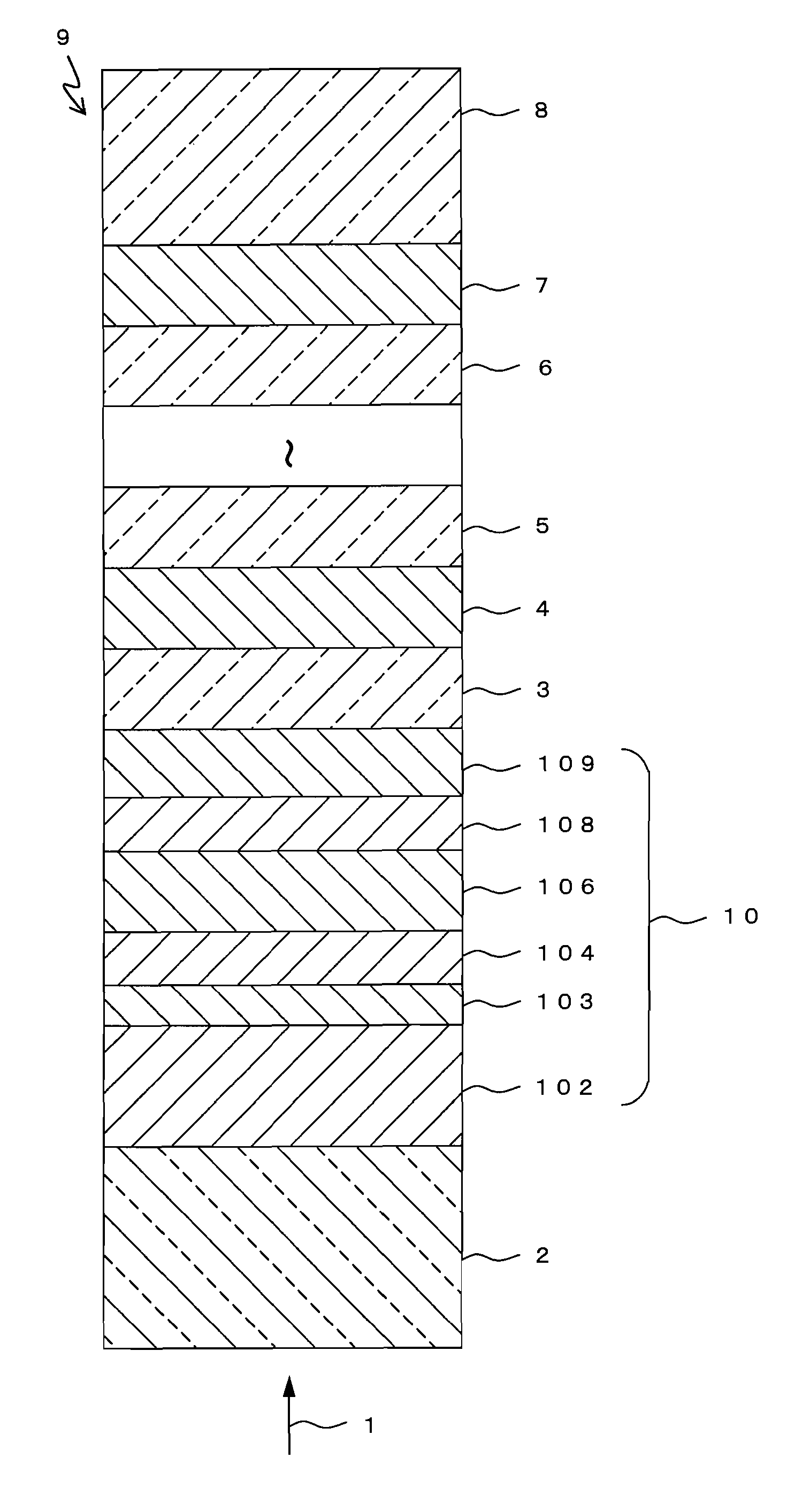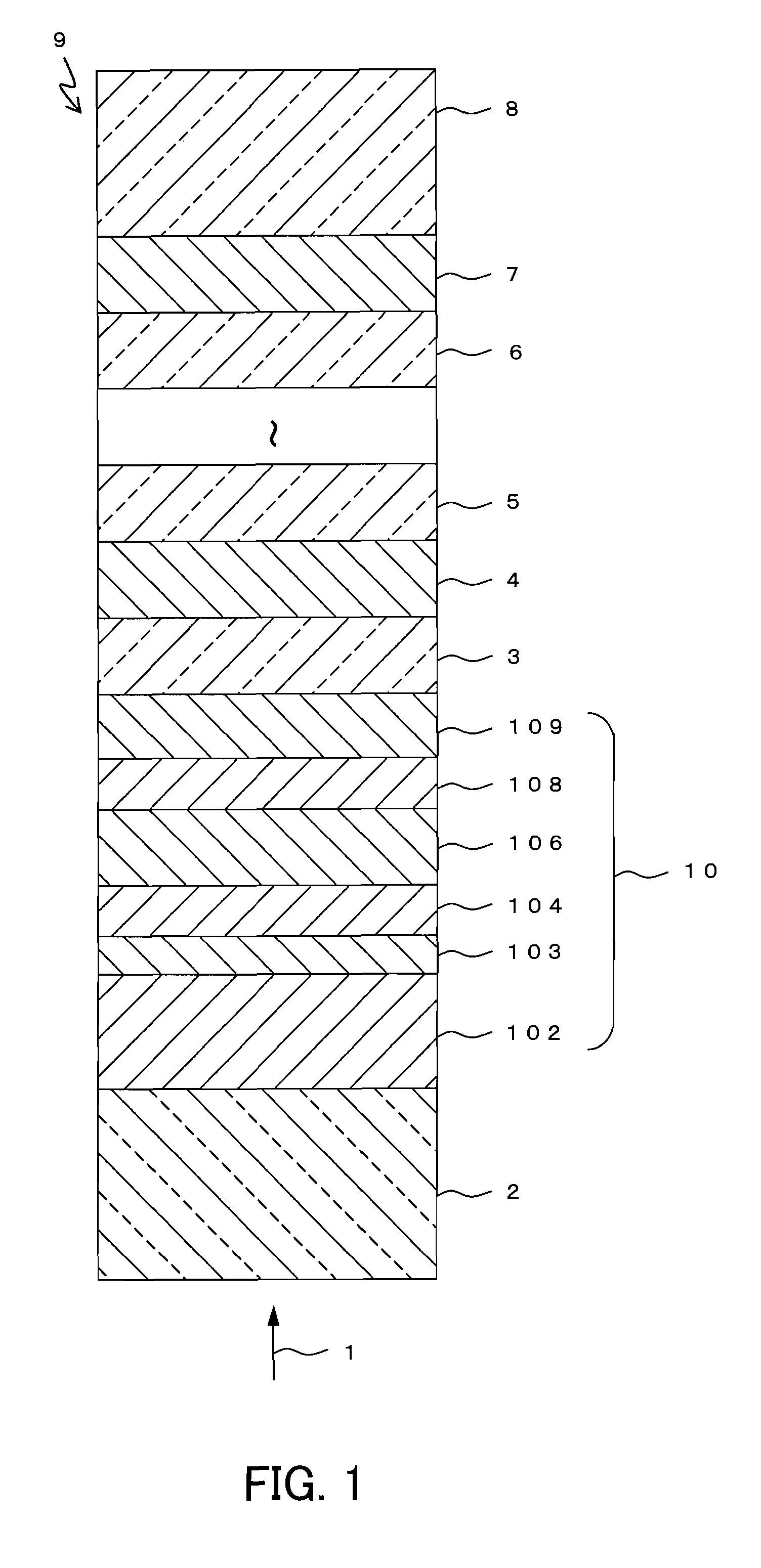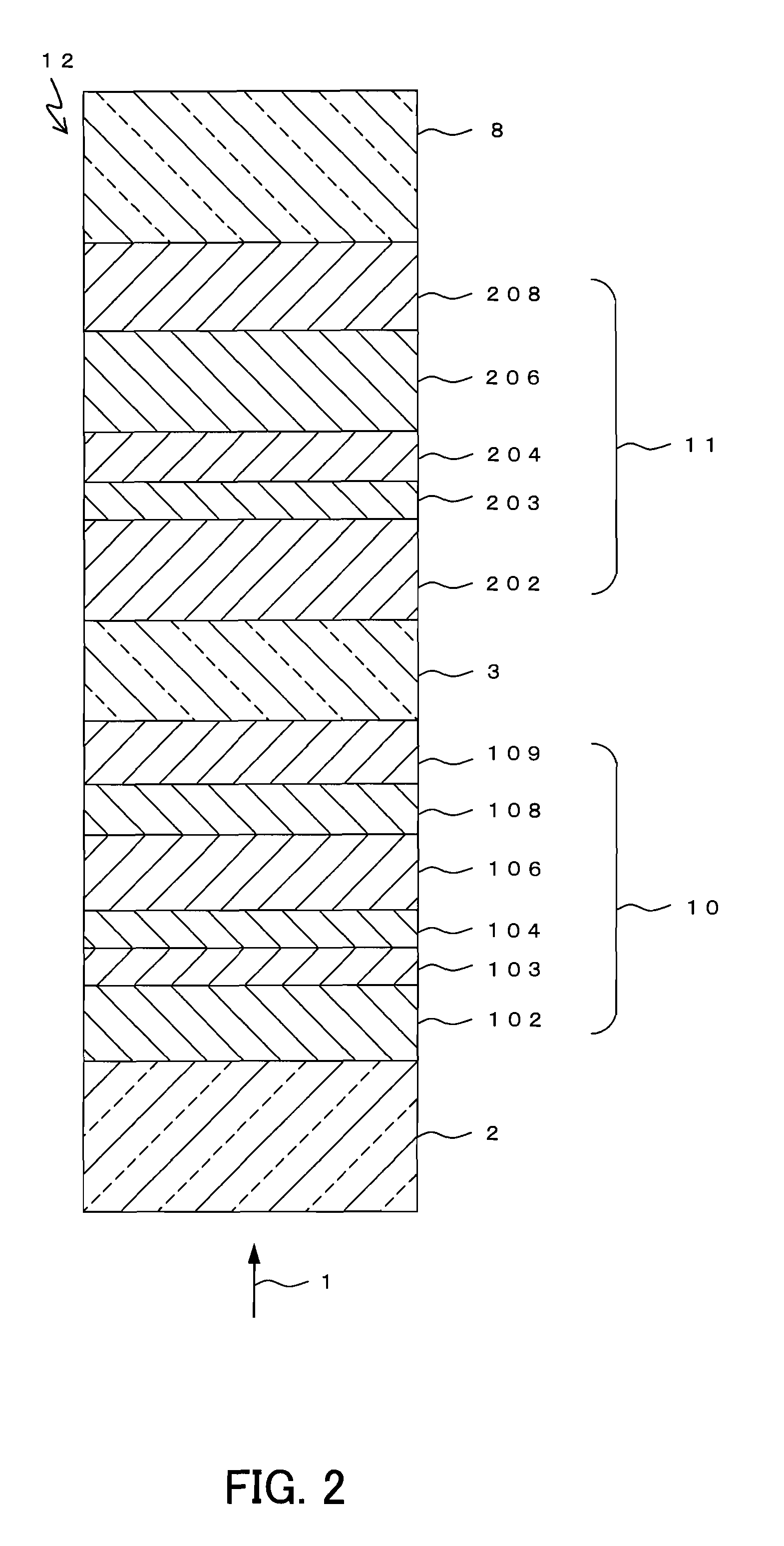Optical Information Recording Medium, Method Of Manufacturing The Same, And Sputtering Target
- Summary
- Abstract
- Description
- Claims
- Application Information
AI Technical Summary
Benefits of technology
Problems solved by technology
Method used
Image
Examples
embodiment 1
[0048]In Embodiment 1, an example of an optical information recording medium of the present invention will be described. FIG. 1 shows a partial cross-sectional view of an optical information recording medium 9 according to Embodiment 1. The optical information recording medium 9 is a multi-layer optical information recording medium on / from which information can be recorded / reproduced by a laser beam 1 irradiated from one side of the medium.
[0049]The optical information recording medium 9 includes a substrate 8, and N (N is a natural number that satisfies N≧2) information layers including an N-th information layer 7, . . . , a second information layer 4, and a first information layer 10 that are formed sequentially on the substrate 8, with respective intermediate layers 6, 5, 3, etc. being interposed therebetween, and a transparent layer 2. In the present embodiment, an information layer disposed at the K-th position (1≦K≦N) when counted from the incident side of the laser beam 1 is ...
embodiment 2
[0115]In Embodiment 2, an example of an optical information recording medium will be described, in which the multi-layer optical information recording medium according to Embodiment 1 of the present invention is provided with two information layers, that is, N=2. FIG. 2 shows a partial cross-sectional view of an optical information recording medium 12 according to Embodiment 2. The optical information recording medium 12 is a two-layer optical information recording medium on / from which information can be recorded / reproduced by a laser beam 1 irradiated from one side of the medium.
[0116]The optical information recording medium 12 includes a substrate 8, and a second information layer 11, an intermediate layer 3, a first information layer 10, and a transparent layer 2 that are formed sequentially on the substrate 8. The substrate 8, the intermediate layer 3, the first information layer 10, and the transparent layer 2 can be formed of the same materials as those of the corresponding la...
embodiment 3
[0146]In Embodiment 3, an example of an optical information recording medium will be described, in which the multi-layer optical information recording medium according to Embodiment 1 is provided with three information layers, that is, N=3. FIG. 3 shows a partial cross-sectional view of an optical information recording medium 16 according to Embodiment 3. The optical information recording medium 16 is a three-layer optical information recording medium on / from which information can be recorded / reproduced by a laser beam 1 irradiated from one side of the medium.
[0147]The optical information recording medium 16 includes a substrate 8, and a third information layer 15, an intermediate layer 5, a second information layer 14, an intermediate layer 3, a first information layer 13, and a transparent layer 2 that are formed sequentially on the substrate 8. The substrate 8, the intermediate layers 3 and 5, and the transparent layer 2 can be formed of the same materials as those of the corresp...
PUM
| Property | Measurement | Unit |
|---|---|---|
| Thickness | aaaaa | aaaaa |
| Thickness | aaaaa | aaaaa |
| Volume | aaaaa | aaaaa |
Abstract
Description
Claims
Application Information
 Login to View More
Login to View More - R&D
- Intellectual Property
- Life Sciences
- Materials
- Tech Scout
- Unparalleled Data Quality
- Higher Quality Content
- 60% Fewer Hallucinations
Browse by: Latest US Patents, China's latest patents, Technical Efficacy Thesaurus, Application Domain, Technology Topic, Popular Technical Reports.
© 2025 PatSnap. All rights reserved.Legal|Privacy policy|Modern Slavery Act Transparency Statement|Sitemap|About US| Contact US: help@patsnap.com



